A coffee shop traveling through time and space! The characteristics of Japanese tea shop are declassified
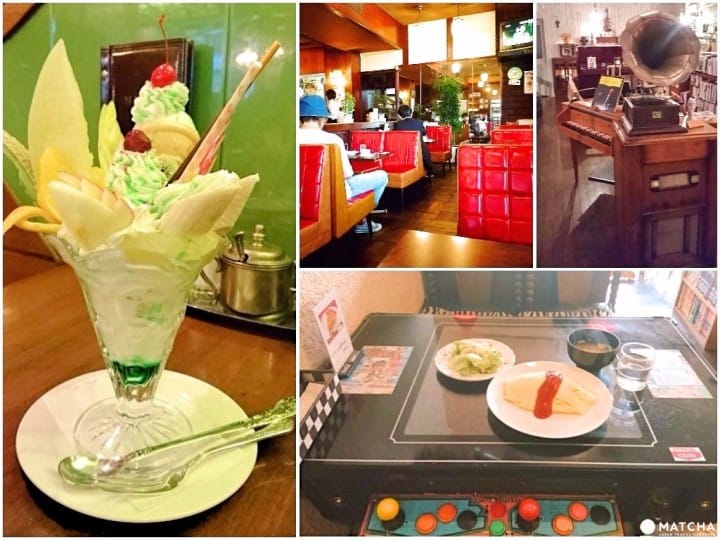
For professional baristas, please follow the coffee workshop (Wechat official account cafe_style)
When you come to Japan, have you ever noticed some inconspicuous or anachronistic cafes on the street corner? These old cafes are usually called "tea". They are like the "ice rooms" unique to Hong Kong that sell cold drinks and ice products. They are places where people can sit down and have tea and chat and relax. Before the popularity of chain coffee shops, there was a trend of "tea shops" in Japan. What is the difference between a tea shop and a chain coffee shop? Today, the editor will explain five differences such as exterior decoration, the way of ordering, the menu, the title of the barista, and the legendary matchbox.
The history of the tea shop
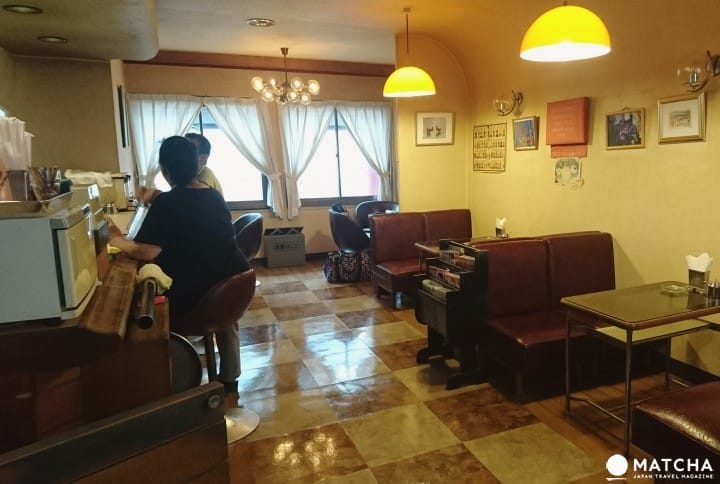
When you see "tea", you may think that it is a place to drink tea, but in fact, a tea shop refers to a coffee shop. Before coffee shops became popular, in order to improve national health and encourage people to drink milk, the Meiji government sprang up stores known as "milk, bread, refreshments", which provided milk, bread, snacks, and so on, but they almost disappeared after the Kanto earthquake of 1923.
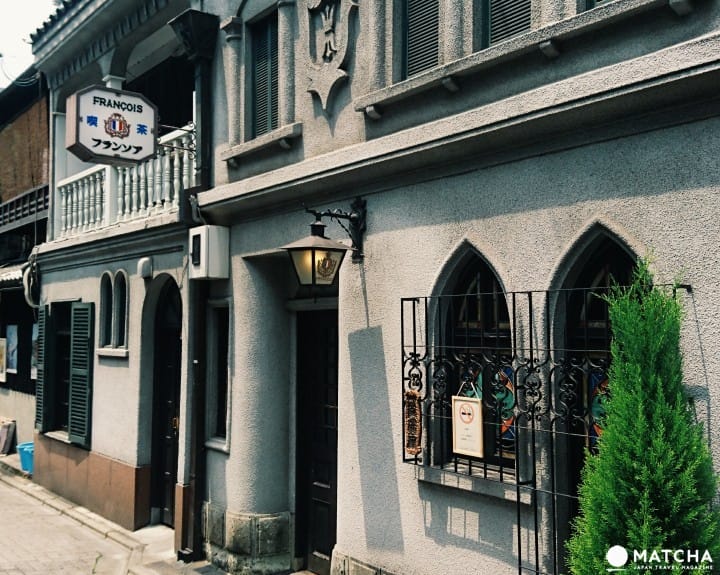
It is said that the first coffee shop in Japan to operate as a "tea shop" was a "tea shop" opened in 1888 (Meiji 21). There are not only drinks and snacks, but also newspapers and books at home and abroad. it is a place where you can drink coffee, absorb new knowledge and exchange culture, but it is a pity that it will soon be closed. Since then, however, cafes operating with reference to the Paris Cafe and the concept of "cultural salon" have sprung up in Japan, and even "beauty tea", which offers foreign wine, foreign food, and can "chat" with female waiters, has sprung up, which is why there is such a name as "pure tea", so that customers can tell whether the restaurant is a place to drink coffee.
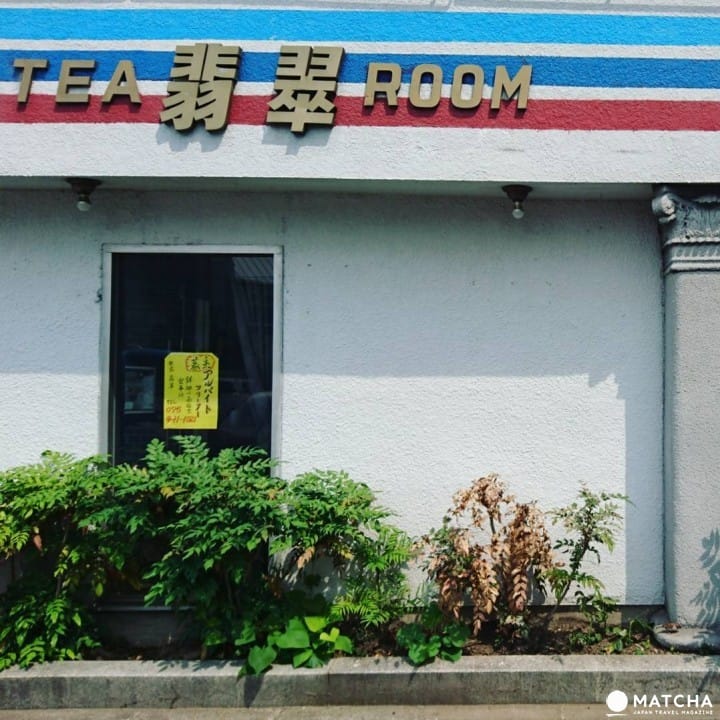
After the Kanto earthquake, tea shops were silent for a time. Immediately after World War II (1941-1945), coffee was banned as a luxury. A large number of tea shops closed down and did not open again until after the war. In the context of the gradual recovery of the economy, personal business tea shops with deep personal characteristics prevailed again during the Showa period in the 1960s.
It is worth mentioning that in the current era of music circulation and convenience, it may be a bit hard to imagine, but not everyone could afford vinyl records and sound equipment at that time, so shops such as "Jazz tea" and "famous music tea" (classical music tea) which can allow guests to enjoy both music and coffee are also very popular. Is that why the young people at that time accosted all the lines of "tea and tea"? "it means whether you want to have a cup of tea (coffee) and whether you want to go to the tea shop and sit down and have a chat.
Can smell the appearance and decoration of the times.
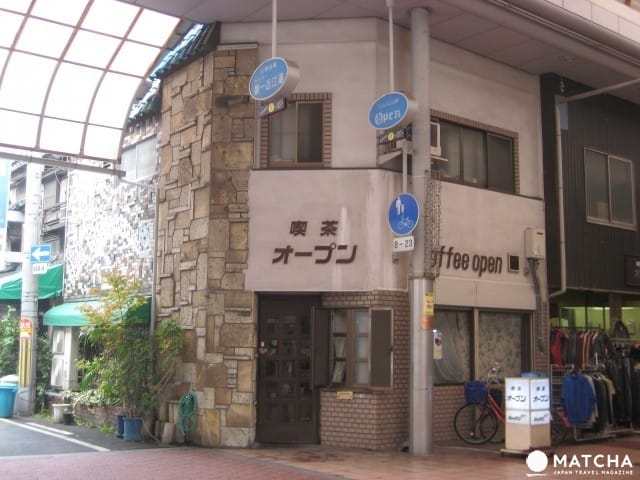
The first thing that is very different from the coffee shop chain is its appearance and decoration. Most of the remaining tea shops started business during the Showa period (1960s), so their architecture, furniture, tableware and so on are mostly popular at that time, which now seems to be a little out of date.
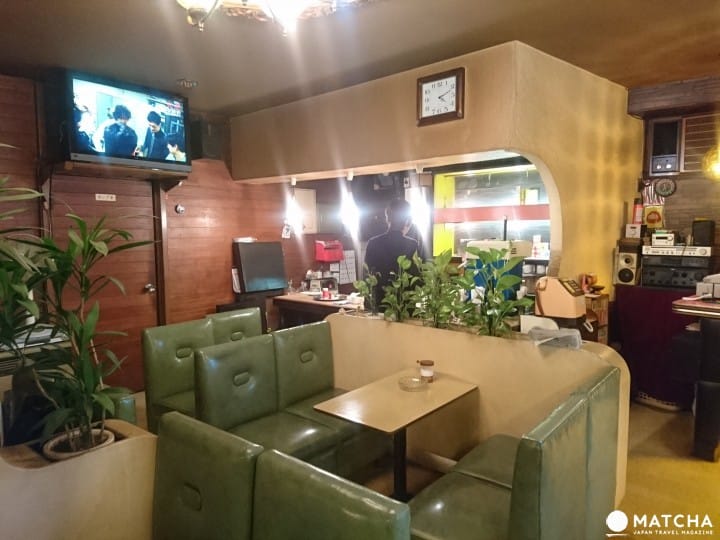
Pupu style lighting, green leather sofa, the store is full of strong Zhaohe flavor.
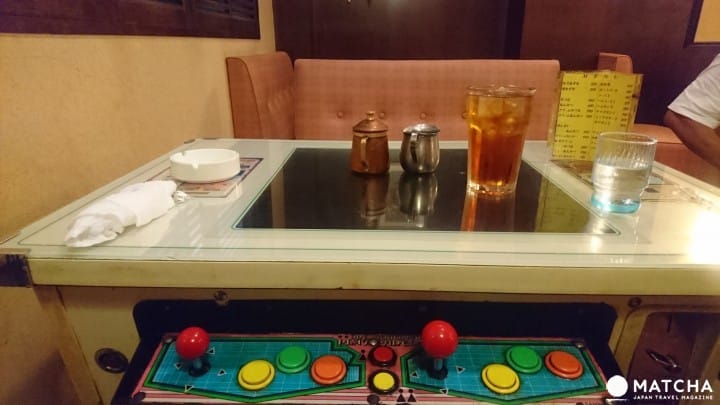
Some tea shops even have tables that can play electric mahjong and video games.
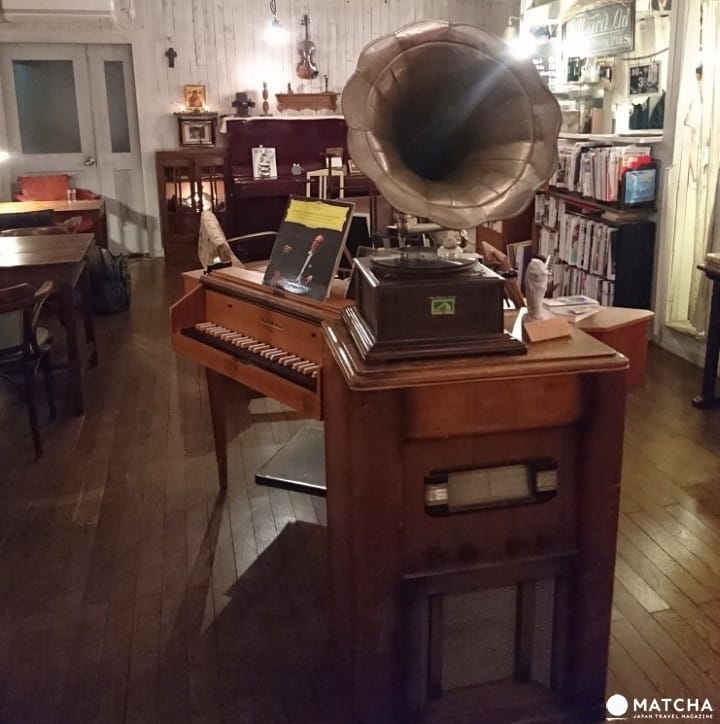
Randomly placed decorations, antiques, more or less can understand the preferences of the shopkeeper.
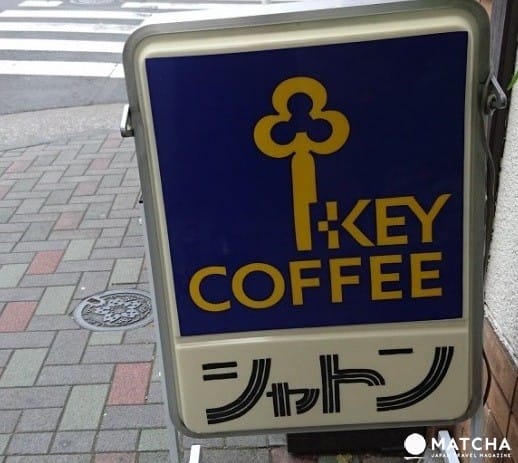
The common signs in front of the tea shop and the font design are also worth pondering. Since most of these signs are given to stores by coffee bean manufacturers, they usually have the names of the operators on them. For example, KEY COFFEE is very common.
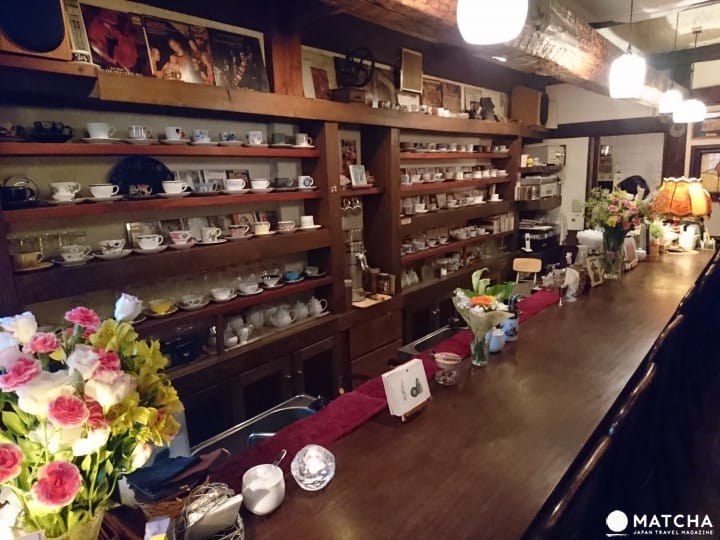
Just staring at the dazzling array of bone porcelain coffee cups on the closet and wondering which one will be delivered later, I can't help but feel excited.
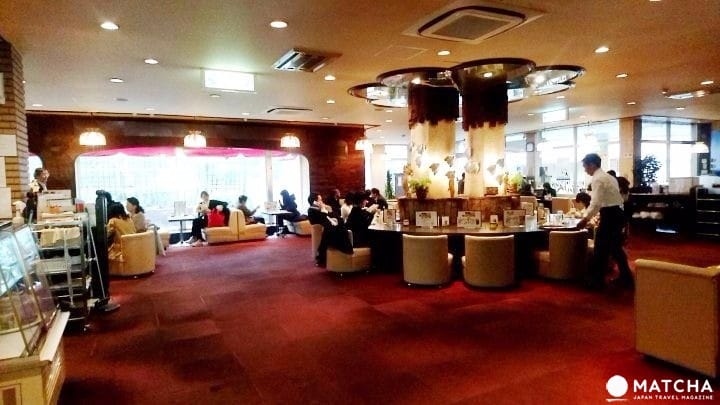
In addition to the tea shop full of personal characteristics, there is also a large tea room that looks like the lobby of a retro hotel.
The way of ordering is very different.
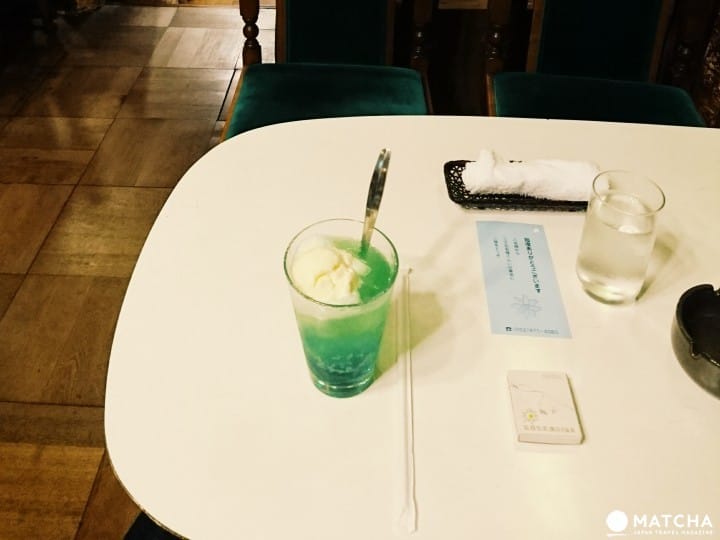
Chain coffee shops usually order food at the counter, check out, wait a moment beside the station, hear the clerk call, pick up the meal, find a seat, right? The tea shop is after entering the door, find a seat you like and you don't have to get up (some shopkeepers may take the initiative to tell you where to sit). Because after you sit down, the store will bring hot towels (or wet paper towels), ice boiled water and MENU, and will come back later to order for you, and finally bring them to the table together with the drinks and the "ticket" (schedule) of the order just now, and then take the detailed form to check out when you leave. (as pictured above, the blue note on the table is the checkout list, and greetings such as thank you for coming are usually printed on the back of the store.)
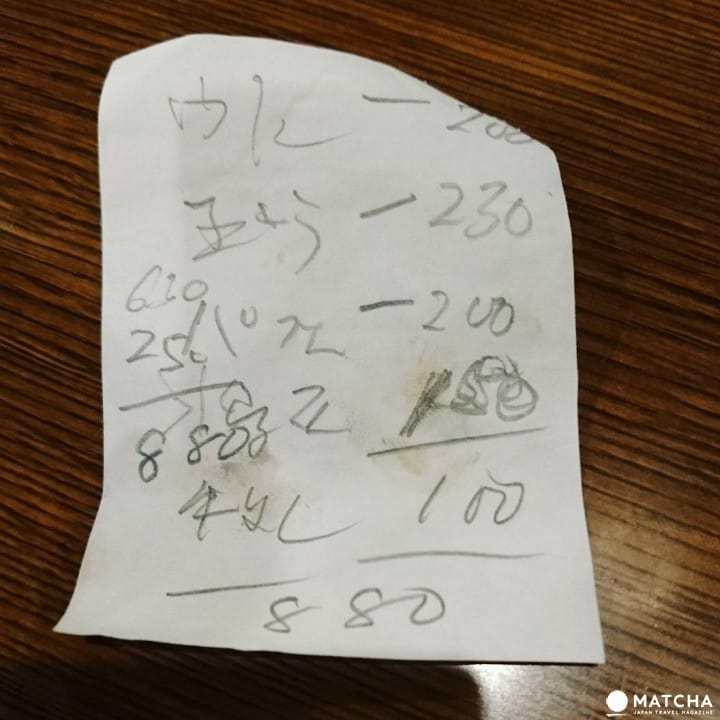
But I have also met a boss with such a personality. It is so interesting to calculate such wild details directly on it. (laughter)
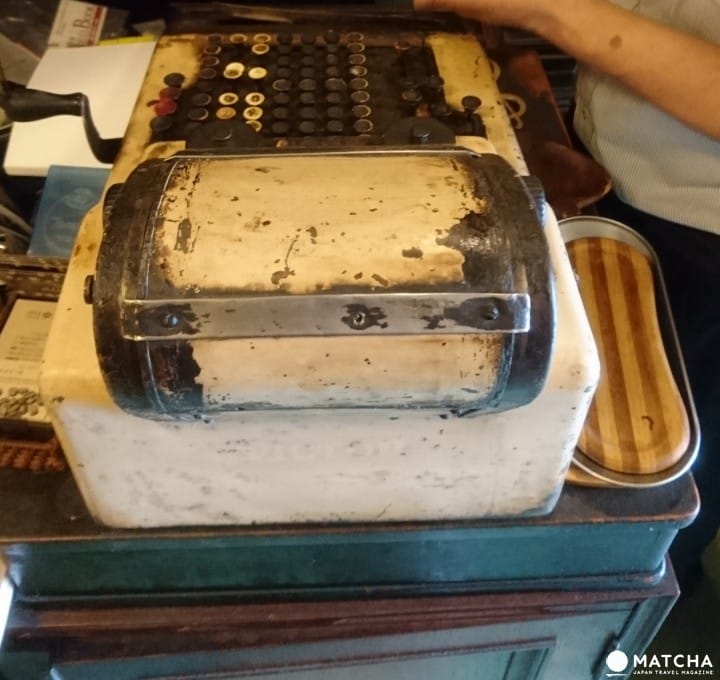
It is rare to encounter a board-level cash register, which still works non-stop every day.
What do you eat in the tea shop?
Because of the regulation of the Japanese food business license, the "tea shop business license" generally can only sell soft drinks and light foods that are simply heated, while those who are generally called "tea shops" (generally referred to as restaurants and cafes) often serve cooked food for alcohol and meals, which belongs to the "catering shop business license." But in fact, there is no rigid stipulation on what kind of license to apply for, so the name of the store must be written as "tea shop or tea shop", so sometimes tea shops also sell hot food, and vice versa. Even if the shop name is "tea shop", it may only sell drinks and desserts.
The tea shop has some dishes that can't be eaten by the chain cafe. Because the tea shop does not have a central kitchen or standardized cooking methods, its methods, tastes, and styles all have their own characteristics. Although they are not super delicious, for the Japanese, going to the tea shop is not for delicious food. It is a nostalgic emotion and familiar taste.
Ice cream soda (ice cream soda)
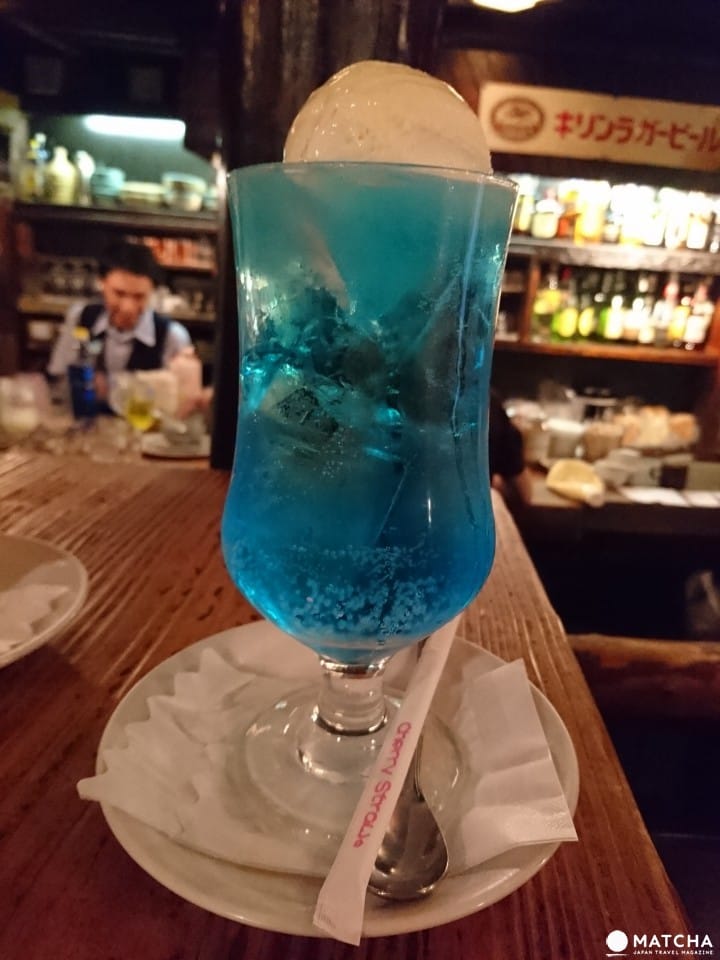
When it comes to tea shops, we have to mention ice cream sodas! Vanilla Ice Cream floats and sinks on blue or green soda, how can a girl's heart not ripple with it?
Coffee (coffee coffee)
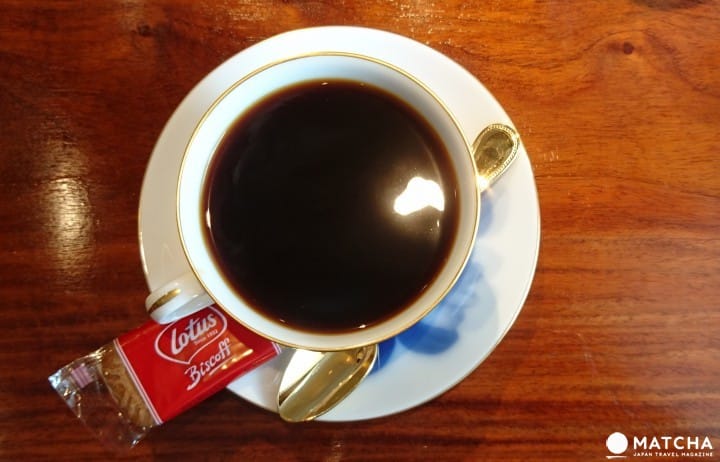
The coffee beans of some tea shops are roasted by themselves, and if the owner is very particular about coffee, the name of the shop will be particularly emphasized, with the words "coffee shop" (coffee shop), home-cooked coffee shop, or "coffee shop" (coffee shop). The most common are special coffee mixed with a variety of beans, iced coffee and Viennese coffee filled with whipped cream.
In addition, tea shops usually don't have Italian thickeners, so they are less likely to drink espresso or flower lattes. If you want to drink a variety of milk, you can choose Oulei coffee. Some stores will bring it with coffee with a small cookie or peanuts or nuts.
Sundaes (sundaes)
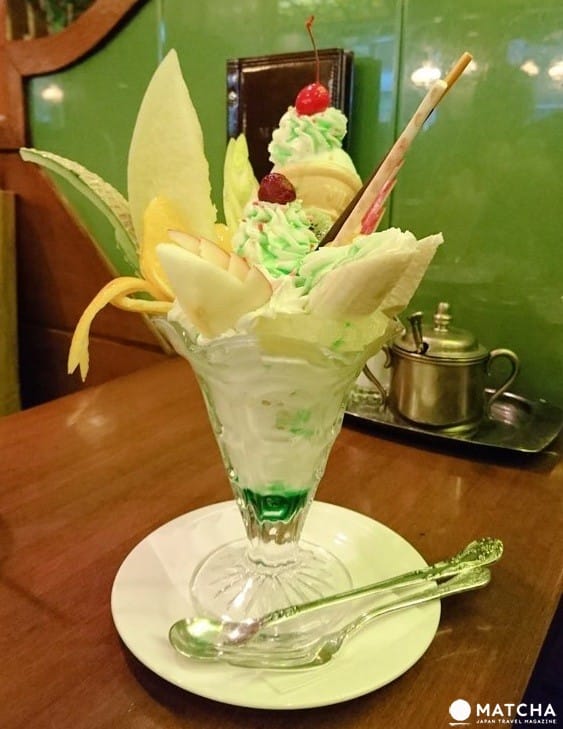
Gorgeous sundaes are also popular in tea shops. Every time I send it up, I wonder where to start.
Muffins (muffins)
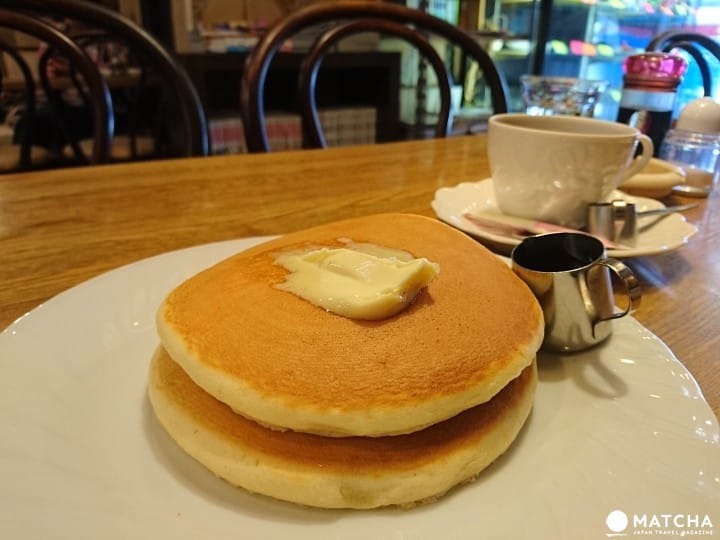
The muffins in the tea shop are usually American muffins, which are different from the popular soft Shuffle muffins, which are relatively simple and down-to-earth in appearance and taste.
The inside of Napo (I don't know what to do)
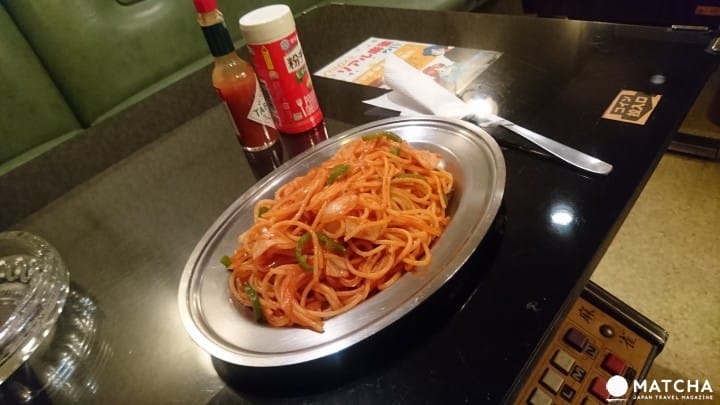
Napoli spaghetti is also common, with spaghetti based on tomato sauce and stir-fried with ham or Viennese sausage with onions and green peppers.
Sandwiches (sandwiches)
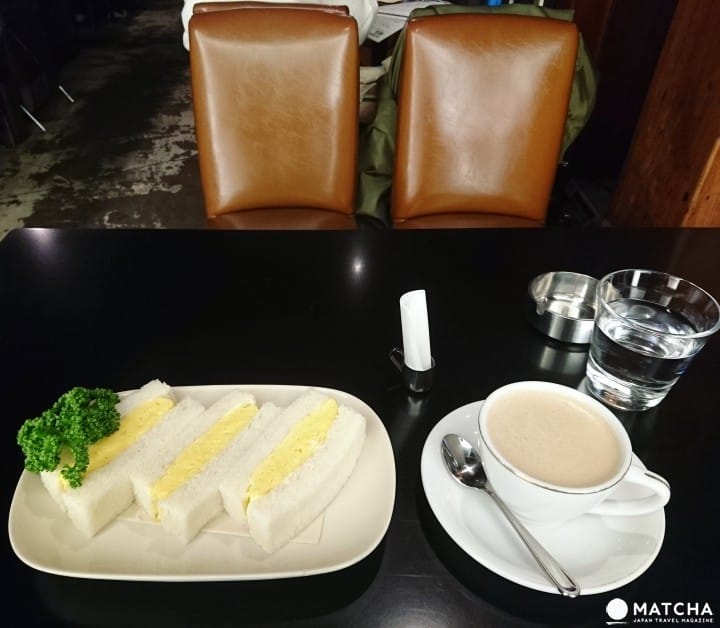
Sandwiches in tea shops are different from those in coffee shops. They are less likely to be full of lettuce, usually simple egg sandwiches (Yuzi sandwiches), ham sandwiches, pizza toast, etc. Yuzi sandwiches are specially recommended, with strong egg flavor and spicy Japanese mayonnaise, which is a perfect match. Nagoya, which is famous for its tea shop, has a unique Kakura red bean toast that firmly holds on to everyone's taste buds.
Egg buns with rice (rice with egg buns)
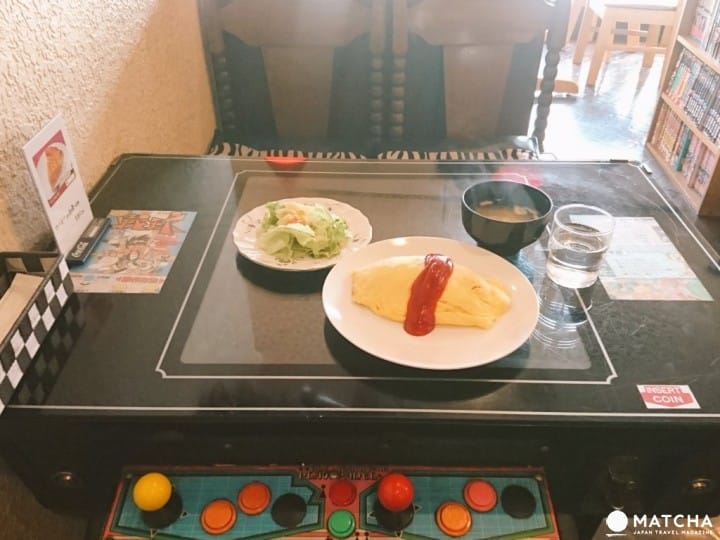
Squeezed with tomato sauce, yellow egg bag rice can be said to be a Japanese dish from a snack to a big dish. Some stores will also provide lunch, curry and other meals. If you have the opportunity, you might as well go to the tea shop around the corner to taste the nostalgic taste in the hearts of the Japanese.
The barista's name is not barista?
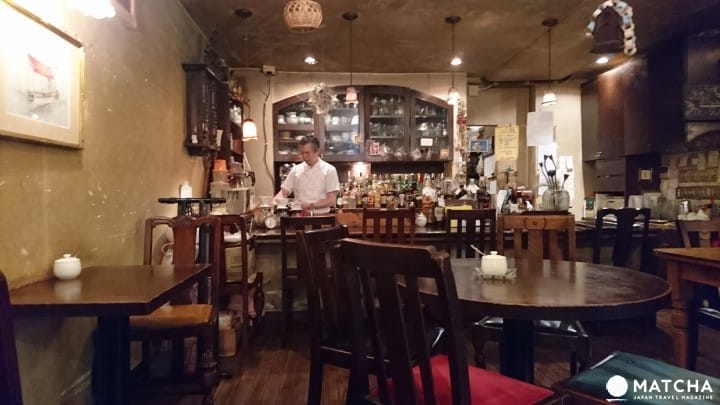
Baristas in coffee chains are often called Barista, but in tea shops they are usually called master, and if they are female, they are called mama. Usually the shopkeeper is also a shopkeeper, and some shopkeepers are different people.
A matchbox instead of a business card
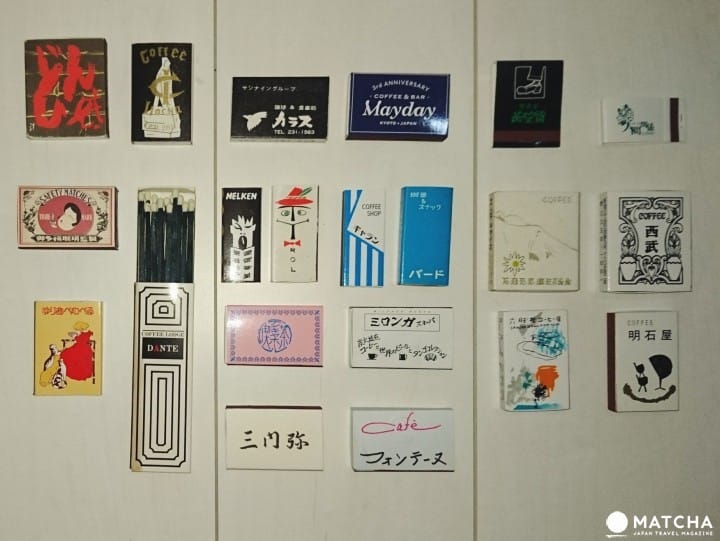
Today, in the Internet era, coffee shop chains will have official websites, and counters may be placed to promote DM, QRcode, etc., so that customers can ask for information about the store. But this is not the case with Showa tea shops, which flourished in the Showa era. Most of them don't have official websites, let alone print any promotional DM.
It may be hard for us to imagine the high smoking rate in the Showa era. Sipping coffee indoors while puffing smoke can be said to be a daily scene at that time, and matchboxes printed with the store's name are often placed next to the counters of tea shops for individuals to obtain for free, just like business cards. The matchbox in each tea shop has its own characteristics, symbolizing the store's style and facade. However, because the cost of making matches is not cheap, and with fewer and fewer customers, few stores continue to provide matchboxes.
Conclusion
The Showa tea shop, which was popular in the Showa era, is fading away because of the emergence of a chain of coffee shops with no successors and relatively cheap prices. Most of the tea shops, which are still open, are loved by frequent customers, and they often see shopkeepers gossiping with their guests. Sometimes, after pushing open the heavy door, when I see the apron-clad Guanzhu watching TV with a remote control in a shop where there are no guests, I always have the illusion of going back to Grandpa's house. Or push open the thick door, years of moisture mixed with the smell of smoke and coffee to the nostrils, what comes into view is full of authentic romantic antique furniture, or retro pleasing Showa modern decoration, perhaps this is the atmosphere of stagnant time, it is the pleasure of visiting this kind of tea shop.
Important Notice :
前街咖啡 FrontStreet Coffee has moved to new addredd:
FrontStreet Coffee Address: 315,Donghua East Road,GuangZhou
Tel:020 38364473
- Prev
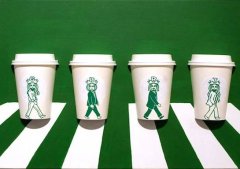
Think deeply: why did Starbucks become a money printer?
Professional baristas exchange please follow the coffee workshop (Wechat official account cafe_style) Starbucks is ten times more likely to make money from technological innovation in mobile payments. Good business model + replicability = high valuation premium. Today, we think more about the special features of Starbucks from the perspective of business model, which can also enlighten the research of our catering industry. Starbucks is a model.
- Next
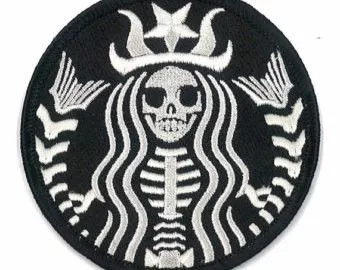
Murder! Murder! Starbucks quietly murders the earth with 4 billion takeout cups every year!
For professional baristas, please follow the coffee workshop (Wechat official account cafe_style). Every year, Starbucks provides customers with 4 billion disposable paper cups. There may be a cup of yours or dozens or hundreds of cups. But have you ever wondered where these cups ended up? Some things are not what you think. Hilo Britt (Shiloh Britt) said to the Silicon Man.
Related
- What documents do you need to go through to open a coffee shop? coffee shop coffee shop certificate processing process
- How to purchase Coffee beans in small Cafe how to choose a suitable supplier for domestic Coffee supply Company
- How to drink Starbucks Fragrance White Coffee? how to make Australian White Coffee? what Italian coffee beans are recommended?
- The Story of Flora Coffee: the name of Flora Coffee Bean and the implication of the Flowers on Florna Coffee
- How much does a cup of coffee cost? How much is the profit of a cup of coffee? What is the profit of the coffee shop in a year?
- Yunnan small Coffee, known as "fragrant Coffee", introduces the characteristics of Alpine Arabica Coffee producing areas in Yunnan, China
- 2023 latest Starbucks full menu price list how much is a cup of Starbucks coffee what is better to drink the most popular hot and cold drinks recommended
- Starbucks different kinds of Coffee Price list Starbucks menu 2023 Top Ten Best drinks in Starbucks
- Starbucks Spring praise Comprehensive matching Coffee Bean theme Story Packaging implication and taste description
- The cost of a cup of coffee latte American coffee cost price and selling price

